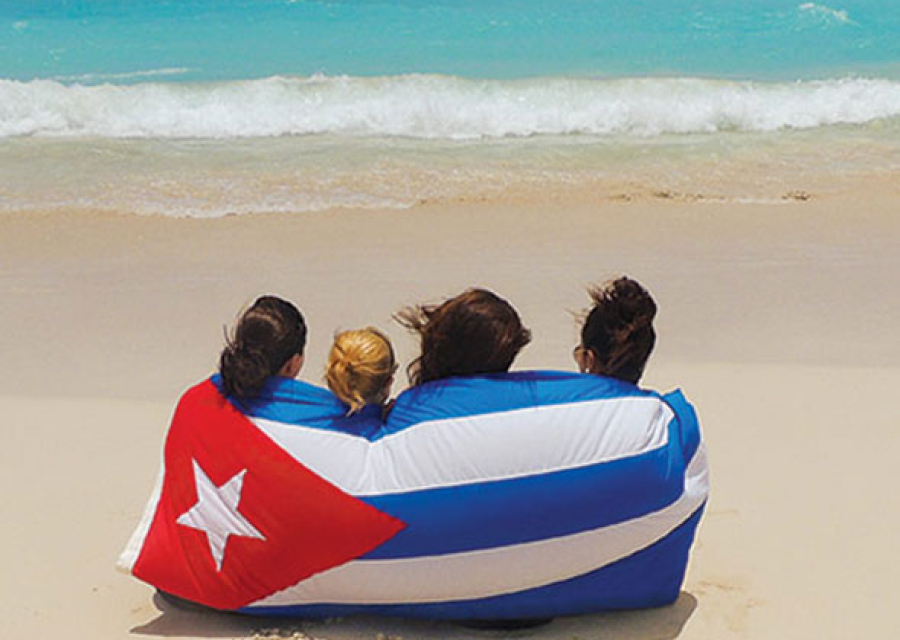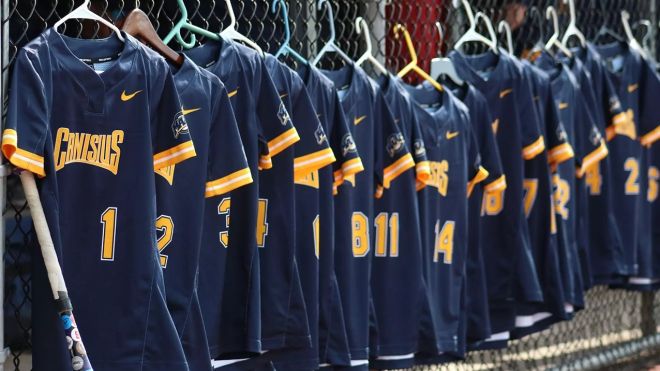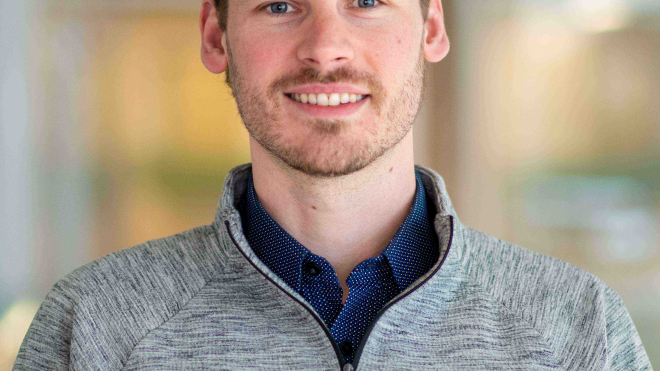
A contingent of Canisius students did something this summer that very few Americans are permitted to do legally: They spent five weeks living and learning in the Republic of Cuba.
The Caribbean country, located just 94 miles off the coast of Florida, was once a playground for Americans. They traveled there to soak up the island’s pristine beaches, near-perfect climate and salsa soundtrack.
That all changed following the 1959 Cuban Revolution.
Fidel Castro and his band of guerillas successfully overthrew Cuban President Fulgencio Batista. Within a year, Castro’s communist government seized private land, nationalized hundreds of private companies and placed heavy taxes on American products coming into the country. The U.S. responded by cutting all diplomatic and economic ties. Cuba has been a forbidden land for American tourists ever since.
The Canisius students are a rare exception.
“Many students study abroad in Spain. Very few get to go to Cuba,” says Matthew J. Mullin, an English and Spanish dual major. “I was excited to travel somewhere so unique, almost exotic.”
Today’s Cuba, however, is a shell of its former self.
The U.S. embargo placed a stranglehold on the island’s economy. Construction of new infrastructure virtually froze and existing buildings continue to be left in disrepair. Up until last year, the only cars that could be freely bought or sold in Cuba were those built before Castro came into office.
In spite of suffering economically, Cuba provides a national healthcare system to its citizens. The government assumes all fiscal and administrative responsibilities for it. Education at every level is free, as well. The nation’s literacy rate is 97 percent. Unemployment averages 1.4 percent. And life expectancy (77 years old) is the same as the United States. Cuba is also the safest of all Latin American countries and maintains the lowest crime rate in the Western Hemisphere.
“The government and the populace really need tourist dollars so they work hard to ensure tourist safety,” explains Richard D. Reitsma, PhD, assistant professor of Spanish and Latin American studies.
Reitsma led the study abroad to Cuba with the help of Tom Hansen, PhD, executive director of the Mexico Solidarity Network, who served as adjunct professor at Canisius during the trip. Their objective “was to give students a richer understanding of what the Revolution accomplished for Cuba and what still needs to change,” adds Reitsma.
The trip took nearly a year to plan.
Americans are only permitted to travel to Cuba for humanitarian, academic or family purposes and must receive approval by the U.S. Department of Treasury. Navigating all the bureaucratic paperwork is a “painstaking process,” says Reitsma, and is further compounded by U.S. policy, which mandates that American students can only receive college credit for courses offered by an accredited U.S. institution. In essence, this meant Reistma had to develop the coursework that Canisius students would study in Cuba.
That coursework consisted of Spanish language, Cuban politics and social history, as well as a class on post-Revolution Cuban cinema. Guest speakers and Cuban leaders often complemented the classes.
“We were very fortunate to hear from such high-quality speakers with diverse viewpoints,” says Milano A. Rodriguez, a Latin American studies, international relations and political science major.
Students heard from gender studies expert and editor of Women of Cuba magazine Isabel Moya, PhD. Moya spoke about the disconnection between Cuba’s progressive gender discrimination laws and the traditionally sexist behaviors and stereotyping, which shape women’s roles and lives in Cuban society. She explained that Cuban women are often hesitant to ‘rock the boat,’ in their male-dominated households, even though the law is on their side.
Cuban author, attorney and professor Julio César Guanche educated students about the 1959 Revolution and why some Cuban people still support it despite the lack of freedoms and material progress.
“Many of the concepts we learned in class were readily applicable to things we did outside the classroom in Cuba,” says Rodriguez.
Beyond the classroom, Canisius students explored the Cuban plight for food, transportation and housing. One assignment required each student to purchase a week’s worth of groceries for a fictional family of three, with only 100 pesos (or the equivalent of $4 American dollars.).
“The selection was sparse and everything was very expensive,” recalls Shannon R. Stephens. The average monthly income in Cuba is between $17 - $30 U.S. dollars, notes the international relations major.
Reitsma adds that each Cuban receives a monthly ration booklet with vouchers for state-subsidized, low-cost staples, such as coffee, sugar, bread and eggs. “However, on the open market, if you have the money, there are no limits on what you can purchase.”
Transportation is another problem that plagues Cubans, in large part because there is a lack of dependable vehicles to ferry people around. Bus transportation is cheaper than owning a car but the demand far outstrips what the government fleet can accommodate. Passengers are subjected to long lines and routes, over-crowded rides and inconsistent schedules.
“People stand on the road for three or four hours and the bus may never come,” says Mullin, who first learned about the country’s transportation issues in Reitsma’s Cuban cinema course. All the films that students viewed addressed the country’s social justice issues, “poverty, class, race and gender,” says Mullin. “But I didn’t fully realize the struggles of these people until I was actually in Cuba and witnessed them, first-hand.”
Though the country’s poverty was obvious to the Canisius group, so too was its pride. Cubans maintain a passion for life under circumstances most couldn’t begin to tolerate. Students learned these lessons in their day-to-day interactions with the Cuban people at the Centro Memorial Martin Luther King Jr., a Christian-based center for social justice.
“The MLK Center was our home and the staff became our family,” says Rodriguez. “They took care of anything we needed and gave us advice on how to successfully maneuver around the capital of Havana.”
Canisius students soaked up Cuban culture with excursions to Old Havana City, Varadero Beach, the Palacio de los Capitanes Generales (the former official residence of the governors) and the home of Nobel Prize winning American author Ernest Hemingway. They sampled Cuban cuisine, relaxed by the crystal-blue ocean waters and enjoyed the sounds of the city’s ethnic salsa music – including a free street performance by singer Silvio Rodriguez who previously sold out Madison Square Garden.
“We spent five weeks with an extended family of welcoming, friendly people who wanted to talk about music, art or baseball – not politics,” adds Mullin.
In fact, the Cuban people make a very clear distinction between Americans and the American government.
“They don’t agree with American policy but nearly every Cuban has a relative living in exile in the United States, so they do have a close, personal relationship with the country,” explains Reitsma.
Shattering the myths and mysteries of this island nation was exactly what Reitsma hoped to achieve with this once-in-a-lifetime opportunity. After all, the students were raised to view Cuba as an enemy and an “alien place.” Today, the students see the country as a home to real people who struggle daily to raise and provide for their families.
“I wanted to share this hidden treasure with our students and give them a more nuanced picture of the United States’ relationship with Cuba,” says Reitsma.
Judging by the students’ reactions, it’s safe to say his mission was accomplished.



